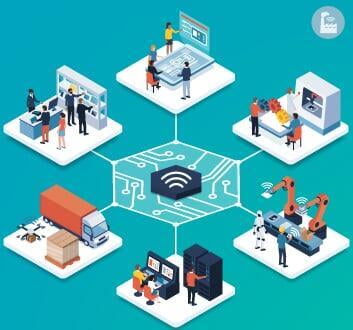What do my customers want? Businesses have spent recent years pondering over the above question. In the last decade, the concept of customer experience has transformed manifolds and now entails everything that caters to customer sentiment. According to the Customers 2020 report, customer experience has overtaken price and product as the key brand differentiator.
So, what is it that makes Customer service experience such a prominent driver?
Customer
Journey
Customer
Retention
Customer
Feedback
Voice of the
Customer
Customer
Loyalty
Customer
Experience
Improvement
The above elements matter. And that’s the case because customer sentiments have the potential to transform into valuable data that can further give away crucial insights.
Yet, despite the high stakes, legacy field service businesses have failed to tap into the tremendous opportunity that disrupts their industry to help them gain the market and the targeted customer segment.
By failing to adopt and implement mobile technology, smart analytics, and the Internet of Things (IoT), such businesses work with manual processes that consistently deliver inaccurate information and fail to optimize their processes.
Due to the lack of right processes and tools, jobs are not appropriately matched to the right technician, the response time is delayed, the first time-fix might seldom happen, and customer satisfaction is highly compromised. The spiral keeps on going; inaccurate reporting leads to wrong information on the customer feedback and hence, vital customer experience insights might be lost. With the use of multiple tools and solutions to try to address the challenge, such legacy organizations tend to fail.
On the contrary, organizations that began by implementing simple technological changes to their functioning such as a range of automated, self-service options are now leading the way. Their adoption of artificial intelligence tools helped them plan proactive work jobs in real-time and equip their technicians with the right mobile tools. Eventually, they were able to boost their service performance and meet customer expectations to arrive on accurate and useful customer insights all the way.
Why insights on customer service experience matter?
Insights about customer service experience can be a culmination of customers’ response to predictive service, their asset’s performance, and their feedback on the field technician’s performance at the job. Here’s the central theme:
To ensure an impeccable service experience that turns your average customer into a delighted one, your field service business needs to have a complete grasp on the 360-degree view of each customer. By eliminating the lack of visibility across all customer touch-points, powerful insights can be generated.
Answering the very first question at the start, here’s what your customers want from your field services business:
By knowing what their customers want, organizations can gain the power to better understand the customer’s impression of the service and identify other cross-selling and upselling opportunities.
All these customer insights, however, need to go deeper than what we just talked about. Your processes and systems must be able to recollect and bank on instances that impact the customer service experience. Each instance should have a complete record of why the service fell short of earning a perfect customer rating and what is the way forward to fix it for future instances. Here's a breakdown of the strategy process.
Word of caution
Data around customer experience can be humongous because there might be too much information: the when, where, why, how, and what of customer interactions. Therefore, integrated and secure data platforms for working with real-time customer experiences are crucial. When you gain access to contextualized data, personalization and segmentation can be seamlessly enabled.
With actionable customer insights, your organization can greatly benefit from efficiency and productivity across marketing, sales, and other departments. With the customer’s unified view available to all departments, the customer can expect a similar interaction across your organization, making them feel ‘identified’ and ‘valuable’, delighting them in the process.
Other Connected Articles
Other Connected Articles



